A force of nature
When institutions threw up constraints, Melanie Winter's tenacity surged — just like the river she championed
What happens if disaster strikes when millions of tourists are in town?

Yesterday, for the first time in months, it felt like fire weather was back. The crisp morning gave way to a searing, low-angled sun. And then, in the afternoon, the winds kicked up. I found myself glancing up at the foothills with that familiar gnawing sense of fear. And a pair of recently released reports on the most destructive fires in LA County history aren't doing much to assuage that apprehension as we roll into what are, historically, the most dangerous months of the year.
Two after-action reports on the Palisades and Eaton Fires from LAFD and LA County point to severe lapses in communications, including failures to properly issue emergency alerts and evacuation orders. Many of the messaging problems, unsurprisingly for our 88-city crazy quilt of a county, were attributed to jurisdictional or interdepartmental confusion. But there were also breakdowns in the chains of command. In the aftermath of the fires, LA Mayor Karen Bass said one of the reasons she fired former LAFD chief Kristin Crowley was because the chief didn't properly warn her about the impending fire danger as she left the country. Crowley disagreed with this assessment — she has since filed a defamation claim against Bass — and we may never know the truth about which warnings were not heeded: the mayor's office still hasn't released all Bass's communications, and there were apparently no texts from the acting mayor at all.
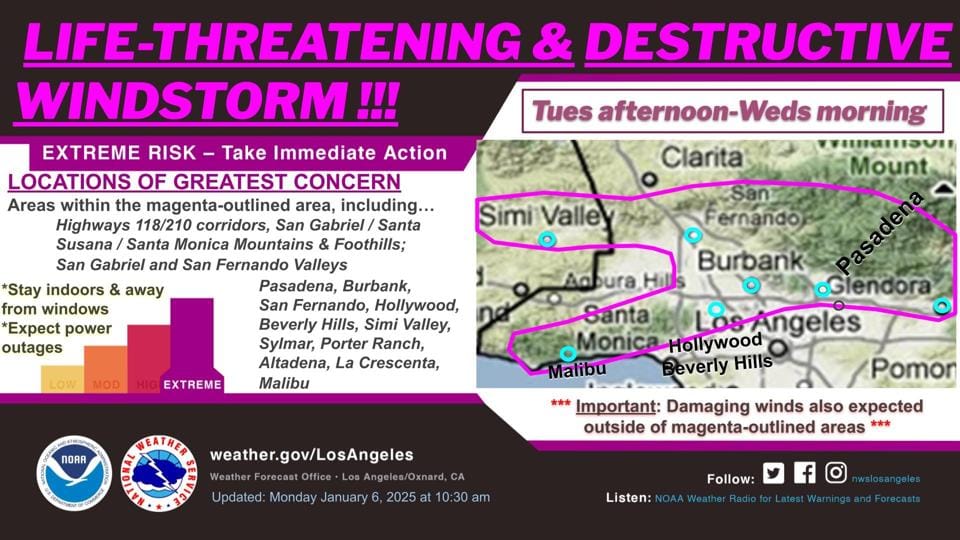
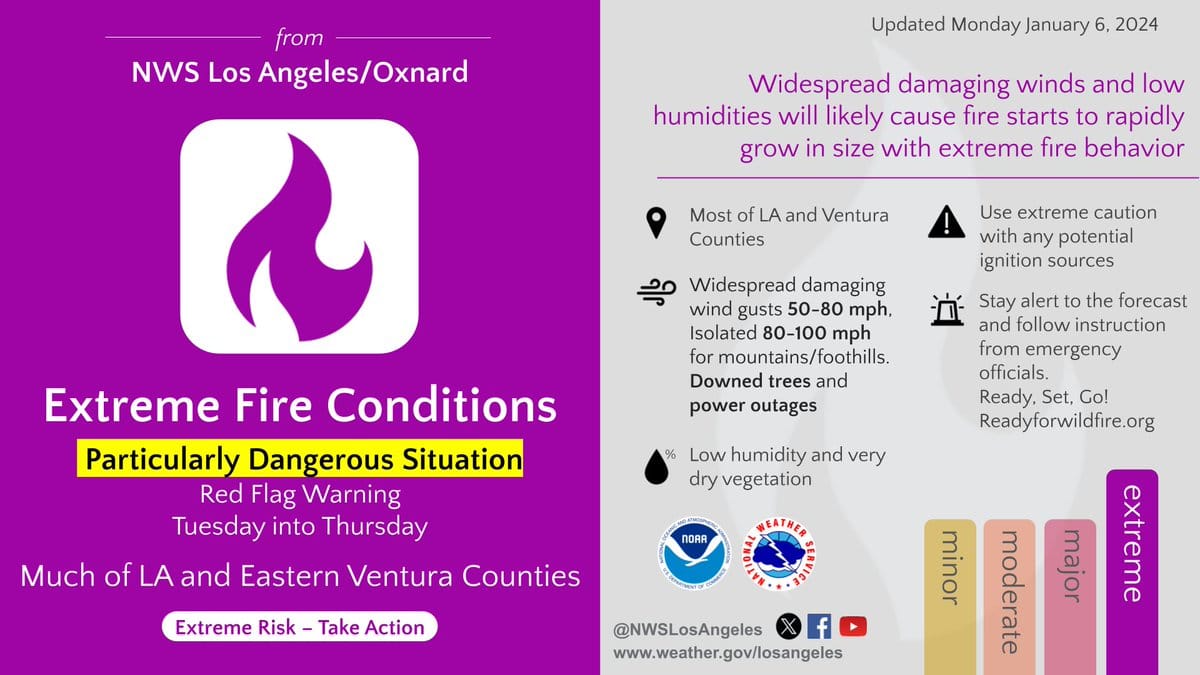
The January 6, 2025 warnings from the National Weather Service were filled with information — but not necessarily easy for a regular person to assess the danger (also the one on the right had the incorrect year, 2024). @NWSLosAngeles
But as I read through the various reports, I grew less concerned about smartphone records and more concerned about who is responsible for providing accurate, jargon-free warnings to our fragmented region in an emergency. I don't think it's solely the fire chief's job. And ideally, the person warning the mayor or the county supervisor would, simultaneously, be warning all of us at the same time. As I noted right after the fires started, for some reason, a large public briefing did not happen in the days before January 7. The bigger question for me, as we welcome even more megaevent visitors to the region in the coming years, is who will be out here sounding the alarms about fire risk and the broader dangers of extreme heat — which kills more people than any other disaster, even without a fire?
When I interviewed disaster scientist Lucy Jones for Dwell in March, we talked about how her role as LA's first-ever in-house city seismologist transformed the way the city prepared for and responded to earthquakes. Jones reminded me that LA used to have a chief resilience officer, a role that was funded by the Rockefeller Foundation until the program was ended in 2019. We do currently have a chief heat officer, Marta Segura, who directs the Climate Emergency Mobilization Office. But there's no one out there in front explaining danger or issuing warnings for fire risk like Jones, who has become the local news go-to for every seismic event.
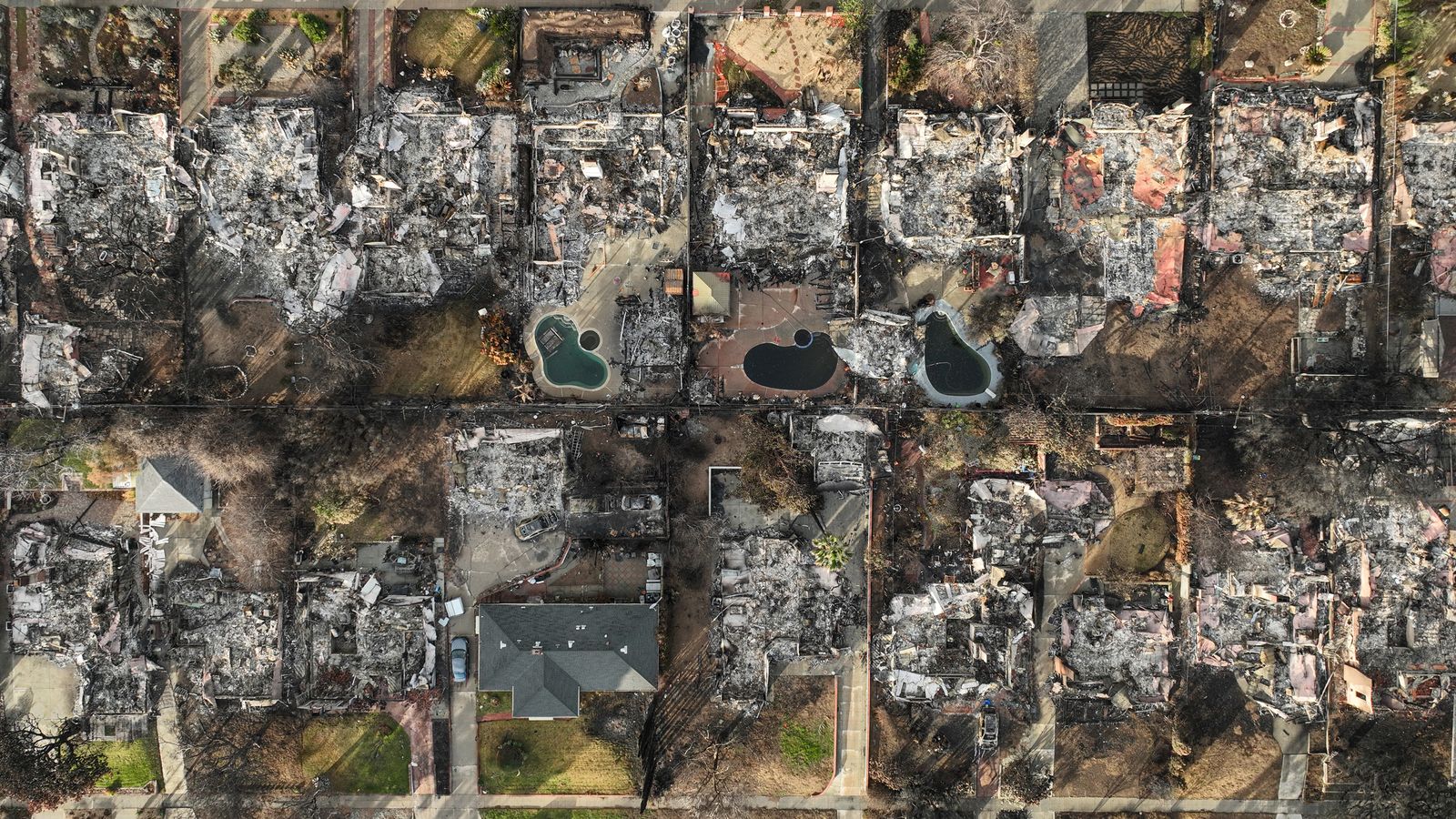
After a series of deadly flooding events in New York City in 2021, I wrote about the importance of having a forecast communicator working in city or county governments. A forecast communicator is not simply responsible for texting an elected official to warn them — they are empowered to speak directly to their constituents. During Hurricane Ida, New York's leaders failed to convey the severity of forecasted downpours, and what was considered to be a well-predicted storm was made more dangerous by the world's worst game of telephone. "People making the decisions didn’t fully understand the complexity of the forecast, and the proper communication was not made to the public," John Homenuk, one of the meteorologists at New York Metro Weather, told me. "It's very clear that the blatant breakdown of communication is what needs to be adjusted." During subsequent wind events in the weeks after the fires here in LA, I was happy to see National Weather Service forecasters come to city and county briefings. But what LA needs — especially as we face unprecedented conditions that no one has ever personally experienced — is someone in that role who is elevated to a leadership position.
Having a dedicated forecast communicator is even more important as the federal government is slaughtering climate science grants and eliminating weather service roles. (At the current moment, our ability to respond to any fires that do ignite will be further hindered by the government shutdown.) As UCLA's Daniel Swain — who was my household's forecast communicator during the fires — has noted, extreme weather forecasts are about more than just collecting and conveying data: "Human knowledge makes for better, more accurate, more timely, and better communicated predictions and warnings." I keep thinking about how it was an actual human scientist, Altadena resident Edgar McGregor, whose personal warnings issued via his local weather and climate Facebook group succeeded in motivating his neighbors to evacuate when official orders never came, saving dozens, if not hundreds, of lives.
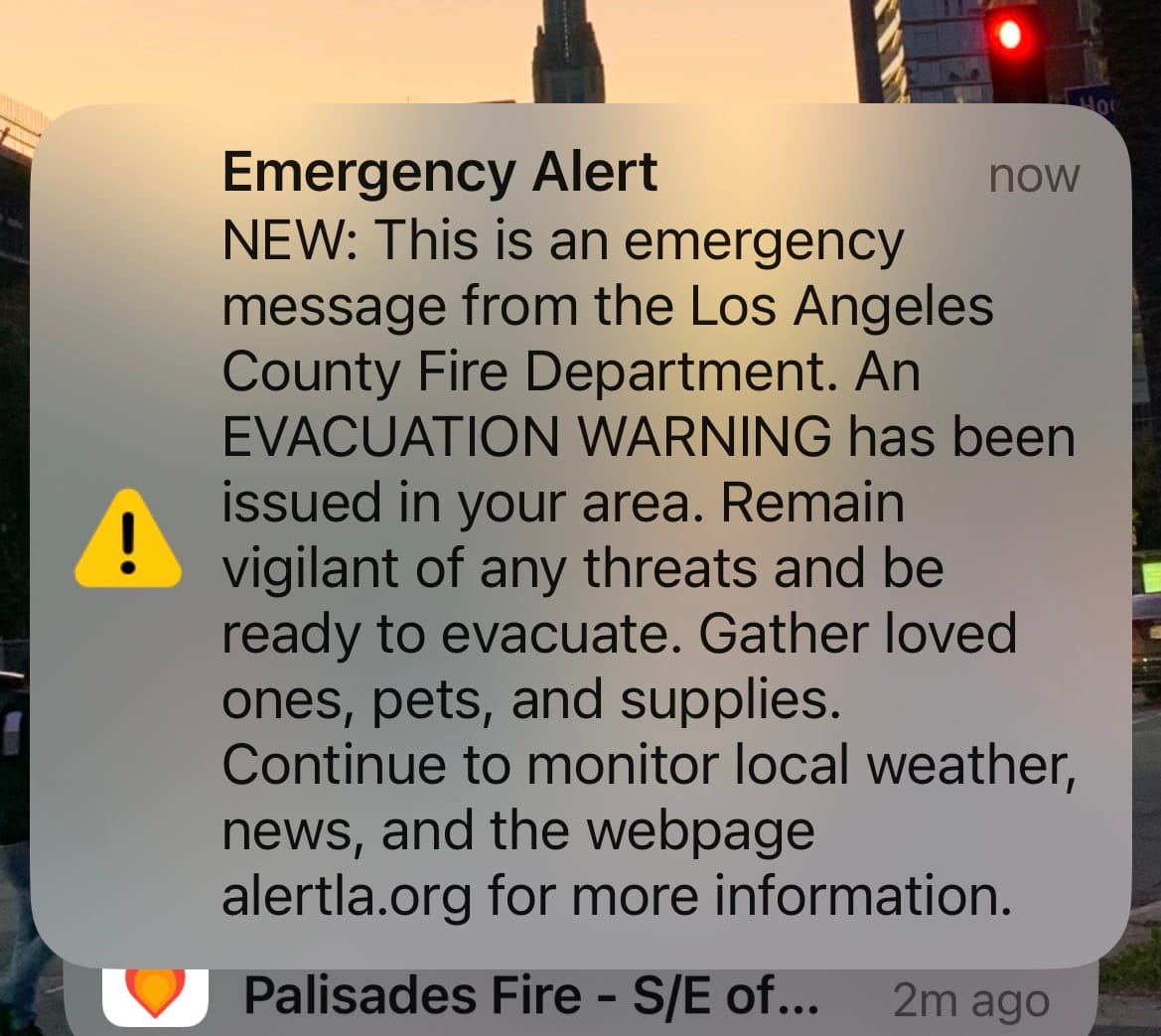
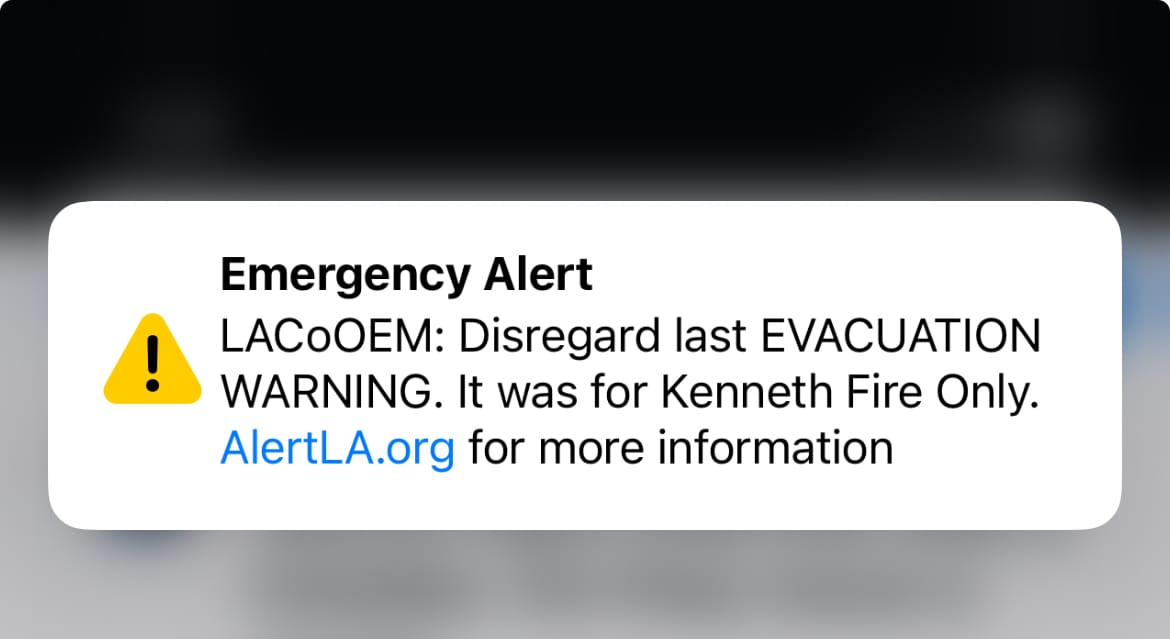
In addition to the missed alerts, who can forget the great false evacuation warnings that went out to millions of LA County residents during the January fires
And what happens if disaster strikes when millions of tourists are in town? As Connie Rice noted in her letter questioning the terms of the city services contract that LA28 is making with LA leaders — overdue as of October 1 — it's unclear who is paying for "equipment pre-positioning costs and venue evacuation costs if wind, fire conditions, or worse arise." Rice also told me that there was extreme concern from city employees about LA's outdated interagency communications networks — the exact type of failures outlined in LAFD's Palisades Fire report. Who is going to foot the bill to make those upgrades by 2028? I nominate Google, newly added LA28 sponsor.
There's no room for error here. If we're failing to disseminate emergency alerts to Angelenos right now, we have to work even harder to get accurate information to people visiting who are not familiar with LA. (And we really, reallyreallyreally don't want more drivers unversed with our evacuation protocols clogging up those routes with more cars.) As I suggested to Jamie Loftus when I was on Sixteenth Minute (of Fame), maybe when people land at LAX, we have them scan a QR code that introduces them to their local forecast communicator, checks if they need emergency translation services, signs them up for NotifyLA, and automatically installs the Watch Duty app on their phone. And, hey, how about the MyShake app while we're at it? 🔥